Triangular Triangles Wrap
For the love of the hypotenuse! In a geometry lesson gone wild, our Triangular Triangles Wrap arranges a slew of right triangles inside a one big triangle. The effect is like a murmuration of starlings or a school of minnows, flashes and flickers in perfect harmony.
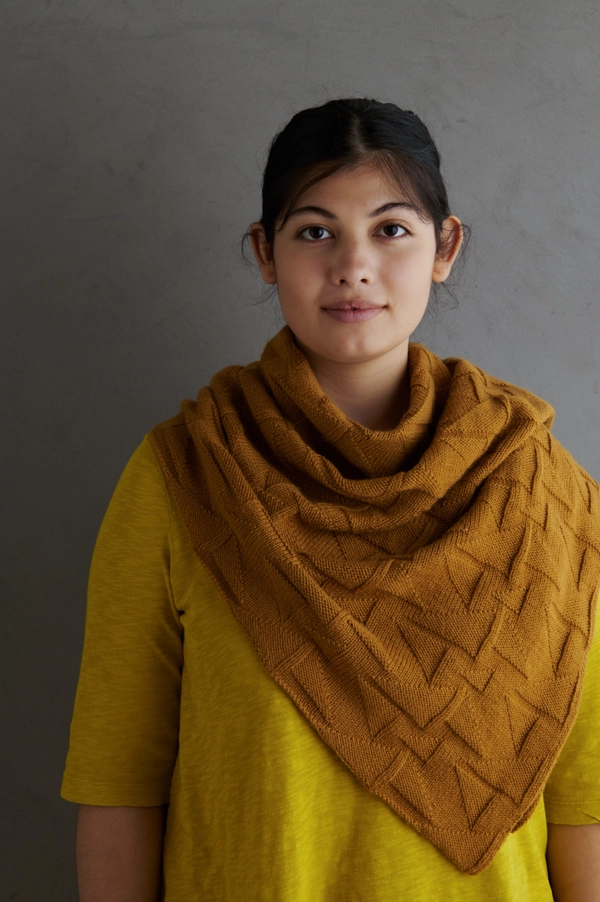
Knits and purls do it again! Their right-side wrong-side versions of each other accomplish amazing feats, including this one, a complex puzzle of shapes. To make the Triangular Triangles Wrap, you can follow along with our written or charted instructions… A choice for your kind of brain!
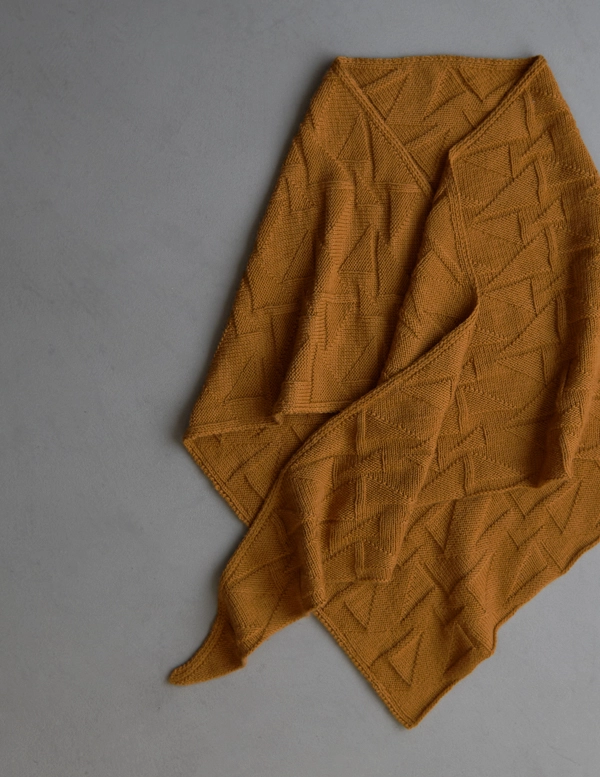
And for vivid stitch definition, plus beauty and warmth, we used our brand new Wigeon. One hundred percent fine Falkland merino, Wigeon is as hardy as its birthplace but soft and cozy enough for the less rugged among us. A classic sportweight, it comes in fifteen solid colors, from soft Gray Mist and punchy Bright Iris to this rich Yellow Curry. Pre-wound in big, squishy balls, you’ll need just four for your Triangular Triangles Wrap!
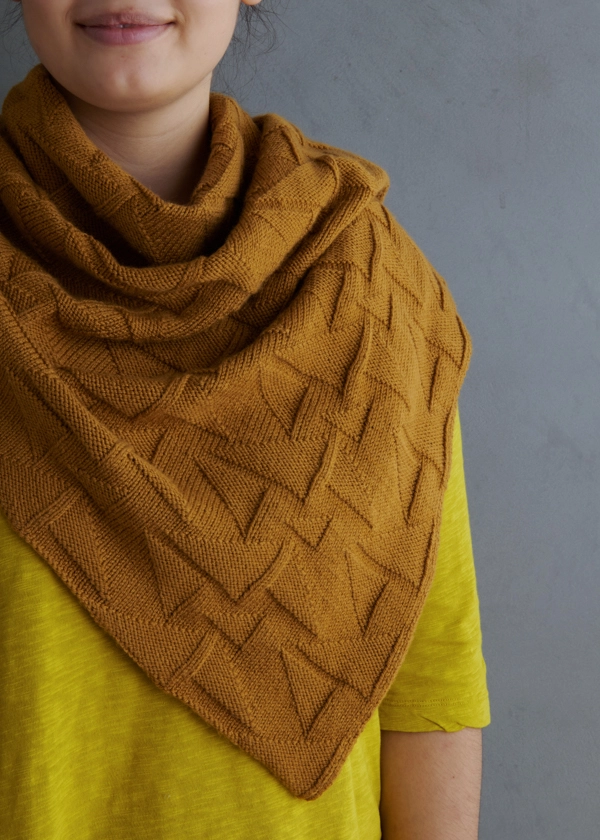
Designed by Purl Soho designer, Jake Canton. Click here to see even more of Jake’s designs!
Share your progress and connect with the community by tagging your pics with #PurlSoho, #PurlSohoBusyHands, #PurlSohoTriangularTrianglesWrap and #PurlSohoWigeon. We can’t wait to see what you make!
Materials
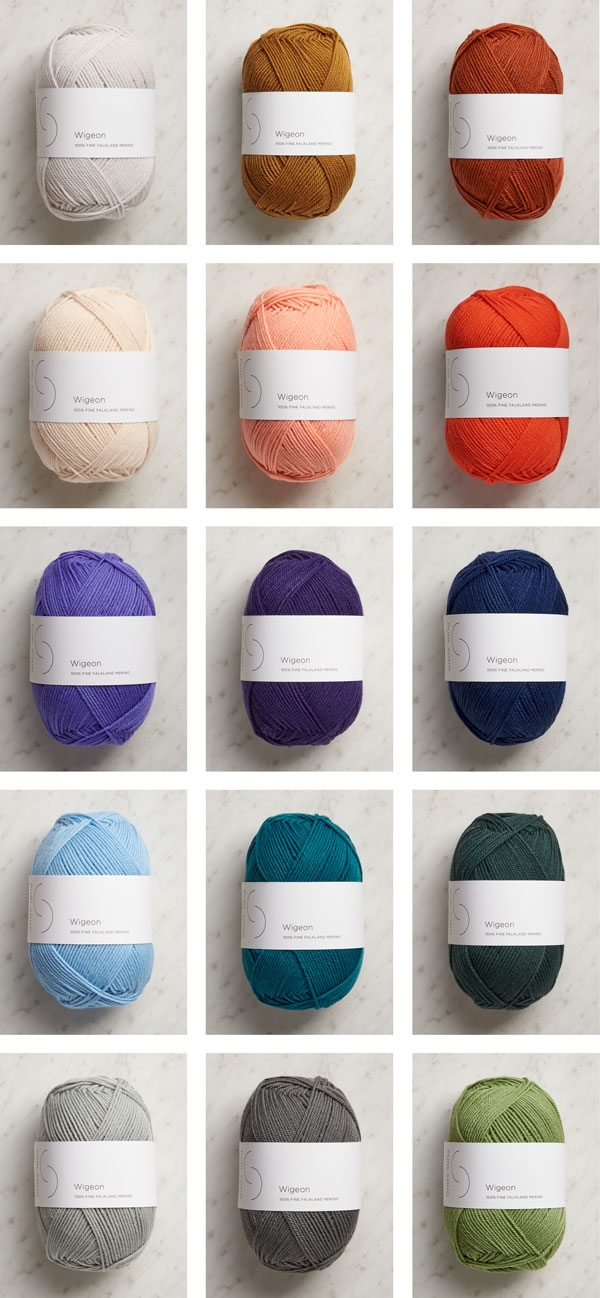
- 4 balls of Purl Soho’s Wigeon, 100% fine Falkland merino. Each ball is 359 yards/ 100 grams; approximately 1160 total yards required. We used Yellow Curry.
- US 5 (3.75mm), 47-inch circular needles
- Stitch markers (optional)
Gauge
24 stitches and 36 rows = 4 inches in stockinette stitch
Size
Finished Length Of Hypotenuse: Approximately 65 inches
Finished Length Of Long Leg (Cast-On Edge): 54½ inches
Finished Length Of Short Leg: 36 inches
Note
CONSTRUCTION
The overall shape of this wrap is a right triangle. You will cast on for its long leg, then decrease 1 stitch every row along the left selvage (i.e. the short leg) until you reach the opposite point. Every 30 rows you will work the 30-stitch repeat one less time until 58 stitches remain, then work a non-repeating pattern to the end.
Pattern
Cast on 328 stitches. We used a basic Long Tail Cast On.
BEGIN
Set-Up Row 1 (wrong side): K1, p1, knit to last 2 stitches, p1, k1.
Set-Up Row 2 (right side): K2, p1, knit to last 3 stitches, p1, k2.
Set-Up Row 3: K1, p1, k1, purl to last 3 stitches, k1, p1, k1.
Work Triangle Pattern either from Written Instructions or Charts, both below.
TRIANGLE PATTERN: WRITTEN INSTRUCTIONS
NOTE: Feel free to place markers at the end of each repeat. If you do, slip markers as you come to them and eliminate them as you work fewer and fewer repeats.
Row 1 (right side): K2, p1, k1, p3, *p14, k13, p3, repeat from * to last 21 stitches, p14, k2, knit 2 together (k2tog), p1, k2. [1 stitch decreased]
Row 2 (wrong side): K1, p1, k1, purl 2 together (p2tog), p2, k13, *k3, p14, k13, repeat from * to last 7 stitches, k3, [p1, k1] 2 times. [1 stitch decreased]
Row 3: K2, p1, k1, p3, *p12, k15, p3, repeat from * to last 19 stitches, p12, k2, k2tog, p1, k2. [1 stitch decreased]
Row 4: K1, p1, k1, p2tog, p2, k11, *k3, p16, k11, repeat from * to last 7 stitches, k3, [p1, k1] 2 times. [1 stitch decreased]
Row 5: K2, p1, k1, p3, *p10, k17, p3, repeat from * to last 17 stitches, p10, k2, k2tog, p1, k2. [1 stitch decreased]
Row 6: K1, p1, k1, p2tog, p2, k9, *k3, p18, k9, repeat from * to last 7 stitches, k3, [p1, k1] 2 times. [1 stitch decreased]
Row 7: K2, p1, k1, p3, *p8, k4, p13, k2, p3, repeat from * to last 15 stitches, p8, k2, k2tog, p1, k2. [1 stitch decreased]
Row 8: K1, p1, k1, p2tog, p2, k7, *k3, p2, k12, p6, k7, repeat from * to last 7 stitches, k3, [p1, k1] 2 times. [1 stitch decreased]
Row 9: K2, p1, k1, p3, *p6, k8, p11, k2, p3, repeat from * to last 13 stitches, p6, k2, k2tog, p1, k2. [1 stitch decreased]
Row 10: K1, p1, k1, p2tog, p2, k5, *k3, p2, k10, p10, k5, repeat from * to last 7 stitches, k3, [p1, k1] 2 times. [1 stitch decreased]
Row 11: K2, p1, k1, p3, *p4, k12, p9, k2, p3, repeat from * to last 11 stitches, p4, k2, k2tog, p1, k2. [1 stitch decreased]
Row 12: K1, p1, k1, p2tog, p2, k3, *k3, p2, k8, p14, k3, repeat from * to last 7 stitches, k3, [p1, k1] 2 times. [1 stitch decreased]
Row 13: K2, p1, k1, p3, *p2, k16, p7, k2, p3, repeat from * to last 9 stitches, p2, k2, k2tog, p1, k2. [1 stitch decreased]
Row 14: K1, p1, k1, p2tog, p2, k1, *k3, p2, k6, p18, k1, repeat from * to last 7 stitches, k3, [p1, k1] 2 times. [1 stitch decreased]
Row 15: K2, p1, k1, p3, *k3, p1, k16, p5, k2, p3, repeat from * to last 7 stitches, k2, k2tog, p1, k2. [1 stitch decreased]
Row 16: K1, p1, k1, p2tog, p1, *p1, k2, p2, k4, p16, k2, p3, repeat from * to last 7 stitches, p1, k2, [p1, k1] 2 times. [1 stitch decreased]
Row 17: K2, p1, k1, p1, k2, *k3, p3, k16, p3, k2, p1, k2, repeat from * to last 5 stitches, k2tog, p1, k2. [1 stitch decreased]
Row 18: K1, p1, k1, p2tog, p4, k2, p16, k4, p3, *p5, k2, p16, k4, p3, repeat from * to last 7 stitches, p4, k1, p1, k1. [1 stitch decreased]
Row 19: K2, p1, k4, *k3, p5, k16, p1, k5, repeat from * to last 33 stitches, k3, p5, k16, p1, k3, k2tog, p1, k2. [1 stitch decreased]
Row 20: K1, p1, k1, p2tog, p18, k6, p3, *p21, k6, p3, repeat from * to last 7 stitches, p4, k1, p1, k1. [1 stitch decreased]
Row 21: K2, p1, k4, *k3, p7, k20, repeat from * to last 31 stitches, k3, p7, k16, k2tog, p1, k2. [1 stitch decreased]
Row 22: K1, p1, k1, p2tog, p14, k8, p3, *k9, p10, k8, p3, repeat from * to last 7 stitches, p4, k1, p1, k1. [1 stitch decreased]
Row 23: K2, p1, k4, *k3, p9, k9, p8, k1, repeat from * to last 29 stitches, k3, p9, k12, k2tog, p1, k2. [1 stitch decreased]
Row 24: K1, p1, k1, p2tog, p10, k10, p3, *p2, k7, p8, k10, p3, repeat from * to last 7 stitches, p4, k1, p1, k1. [1 stitch decreased]
Row 25: K2, p1, k4, *k3, p11, k7, p6, k3, repeat from * to last 27 stitches, k3, p11, k8, k2tog, p1, k2. [1 stitch decreased]
Row 26: K1, p1, k1, p2tog, p6, k12, p3, *p4, k5, p6, k12, p3, repeat from * to last 7 stitches, p4, k1, p1, k1. [1 stitch decreased]
Row 27: K2, p1, k4, *k3, p13, k5, p4, k5, repeat from * to last 25 stitches, k3, p13, k4, k2tog, p1, k2. [1 stitch decreased]
Row 28: K1, p1, k1, p2tog, p19, *p6, k3, p21, repeat from * to last 7 stitches, p4, k1, p1, k1. [1 stitch decreased]
Row 29: K2, p1, k4, *k21, p2, k7, repeat from * to last 23 stitches, k18, k2tog, p1, k2. [1 stitch decreased]
Row 30: K1, p1, k1, p2tog, p17, *p8, k1, p21, repeat from * to last 7 stitches, p4, k1, p1, k1. [1 stitch decreased]
Repeat Rows 1-30 eight more times. [58 stitches remain]
DECREASE TO POINT
Row 1 (right side): K2, p1, k1, p17, k13, p17, k2, k2tog, p1, k2. [57 stitches remain]
Row 2 (wrong side): K1, p1, k1, p2tog, p2, k16, p14, k16, [p1, k1] 2 times. [56 stitches remain]
Row 3: K2, p1, k1, p15, k15, p15, k2, k2tog, p1, k2. [55 stitches remain]
Row 4: K1, p1, k1, p2tog, p2, k14, p16, k14, [p1, k1] 2 times. [54 stitches remain]
Row 5: K2, p1, k1, p13, k17, p13, k2, k2tog, p1, k2. [53 stitches remain]
Row 6: K1, p1, k1, p2tog, p2, k12, p18, k12, [p1, k1] 2 times. [52 stitches remain]
Row 7: K2, p1, k1, p11, k4, p13, k2, p11, k2, k2tog, p1, k2. [51 stitches remain]
Row 8: K1, p1, k1, p2tog, p2, k10, p2, k12, p6, k10, [p1, k1] 2 times. [50 stitches remain]
Row 9: K2, p1, k1, p9, k8, p11, k2, p9, k2, k2tog, p1, k2. [49 stitches remain]
Row 10: K1, p1, k1, p2tog, p2, k8, p2, k10, p10, k8, [p1, k1] 2 times. [48 stitches remain]
Row 11: K2, p1, k1, p7, k12, p9, k2, p7, k2, k2tog, p1, k2. [47 stitches remain]
Row 12: K1, p1, k1, p2tog, p2, k6, p2, k8, p14, k6, [p1, k1] 2 times. [46 stitches remain]
Row 13: K2, p1, k1, p5, k16, p7, k2, p5, k2, k2tog, p1, k2. [45 stitches remain]
Row 14: K1, p1, k1, p2tog, p2, k4, p2, k6, p18, k4, [p1, k1] 2 times. [44 stitches remain]
Row 15: K2, p1, k1, p3, k3, p1, k16, p5, k2, p3, k2, k2tog, p1, k2. [43 stitches remain]
Row 16: K1, p1, k1, p2tog, p2, k2, p2, k4, p16, k2, p4, k2, [p1, k1] 2 times. [42 stitches remain]
Row 17: K2, p1, k1, p1, k5, p3, k16, p3, k2, p1, k2, k2tog, p1, k2. [41 stitches remain]
Row 18: K1, p1, k1, p2tog, p4, k2, p16, k4, p7, k1, p1, k1. [40 stitches remain]
Row 19: K2, p1, k7, p5, k16, p1, k3, k2tog, p1, k2. [39 stitches remain]
Row 20: K1, p1, k1, p2tog, p18, k6, p7, k1, p1, k1. [38 stitches remain]
Row 21: K2, p1, k7, p7, k16, k2tog, p1, k2. [37 stitches remain]
Row 22: K1, p1, k1, p2tog, p14, k8, p7, k1, p1, k1. [36 stitches remain]
Row 23: K2, p1, k7, p9, k12, k2tog, p1, k2. [35 stitches remain]
Row 24: K1, p1, k1, p2tog, p10, k10, p7, k1, p1, k1. [34 stitches remain]
Row 25: K2, p1, k7, p11, k8, k2tog, p1, k2. [33 stitches remain]
Row 26: K1, p1, k1, p2tog, p6, k12, p7, k1, p1, k1. [32 stitches remain]
Row 27: K2, p1, k7, p13, k4, k2tog, p1, k2. [31 stitches remain]
Row 28: K1, p1, k1, p2tog, p23, k1, p1, k1. [30 stitches remain]
Row 29: K2, p1, k22, k2tog, p1, k2. [29 stitches remain]
Row 30: K1, p1, k1, p2tog, p21, k1, p1, k1. [28 stitches remain]
Row 31: K2, p1, k1, p17, k2, k2tog, p1, k2. [27 stitches remain]
Row 32: K1, p1, k1, p2tog, p2, k16, [p1, k1] 2 times. [26 stitches remain]
Row 33: K2, p1, k1, p15, k2, k2tog, p1, k2. [25 stitches remain]
Row 34: K1, p1, k1, p2tog, p2, k14, [p1, k1] 2 times. [24 stitches remain]
Row 35: K2, p1, k1, p13, k2, k2tog, p1, k2. [23 stitches remain]
Row 36: K1, p1, k1, p2tog, p2, k12, [p1, k1] 2 times. [22 stitches remain]
Row 37: K2, p1, k1, p11, k2, k2tog, p1, k2. [21 stitches remain]
Row 38: K1, p1, k1, p2tog, p2, k10, [p1, k1] 2 times. [20 stitches remain]
Row 39: K2, p1, k1, p9, k2, k2tog, p1, k2. [19 stitches remain]
Row 40: K1, p1, k1, p2tog, p2, k8, [p1, k1] 2 times. [18 stitches remain]
Row 41: K2, p1, k1, p7, k2, k2tog, p1, k2. [17 stitches remain]
Row 42: K1, p1, k1, p2tog, p2, k6, [p1, k1] 2 times. [16 stitches remain]
Row 43: K2, p1, k1, p5, k2, k2tog, p1, k2. [15 stitches remain]
Row 44: K1, p1, k1, p2tog, p2, k4, [p1, k1] 2 times. [14 stitches remain]
Row 45: K2, p1, k1, p3, k2, k2tog, p1, k2. [13 stitches remain]
Row 46: K1, p1, k1, p2tog, p2, k2, [p1, k1] 2 times. [12 stitches remain]
Row 47: K2, p1, k1, p1, k2, k2tog, p1, k2. [11 stitches remain]
Row 48: K1, p1, k1, p2tog, p3, k1, p1, k1. [10 stitches remain]
Row 49: K2, p1, k2, k2tog, p1, k2. [9 stitches remain]
Row 50: K1, p1, k1, p2tog, [p1, k1] 2 times. [8 stitches remain]
Row 51: K2, p1, k2tog, p1, k2. [7 stitches remain]
Row 52: K1, [p2tog] 2 times, p1, k1. [5 stitches remain]
Row 53: K1, knit 3 together, k1. [3 stitches remain]
Go on to Finishing section below.
TRIANGLE PATTERN: CHART
NOTE: Feel free to place markers at the end of each repeat. If you do, slip markers as you come to them and eliminate them as you work fewer and fewer repeats. And if you’re new to knitting charts, unravel the mysteries with our Reading A Chart tutorial!
Start in the bottom right corner of Chart 1 (see below). Work right-side (odd numbered) rows from right to left and wrong-side (even numbered) rows from left to right.
Work Rows 1-30 of Chart 1, working the 30-stitch repeat nine times.
Repeat Rows 1-30 eight more times, each time working the 30-stitch repeat one less time. [58 stitches remain]
Continue to Chart 2 and work Rows 1-53. [3 stitches remain]
Go on to Finishing section below.
Key
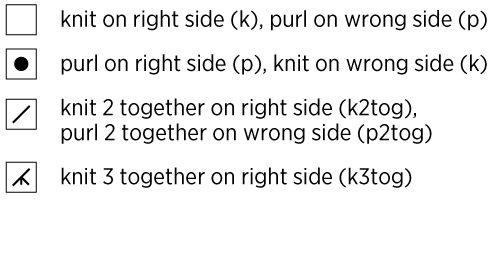
Chart 1
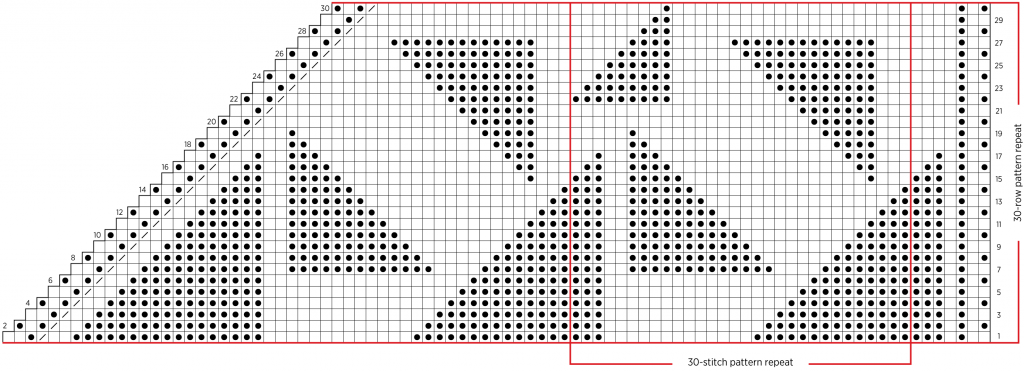
Chart 2
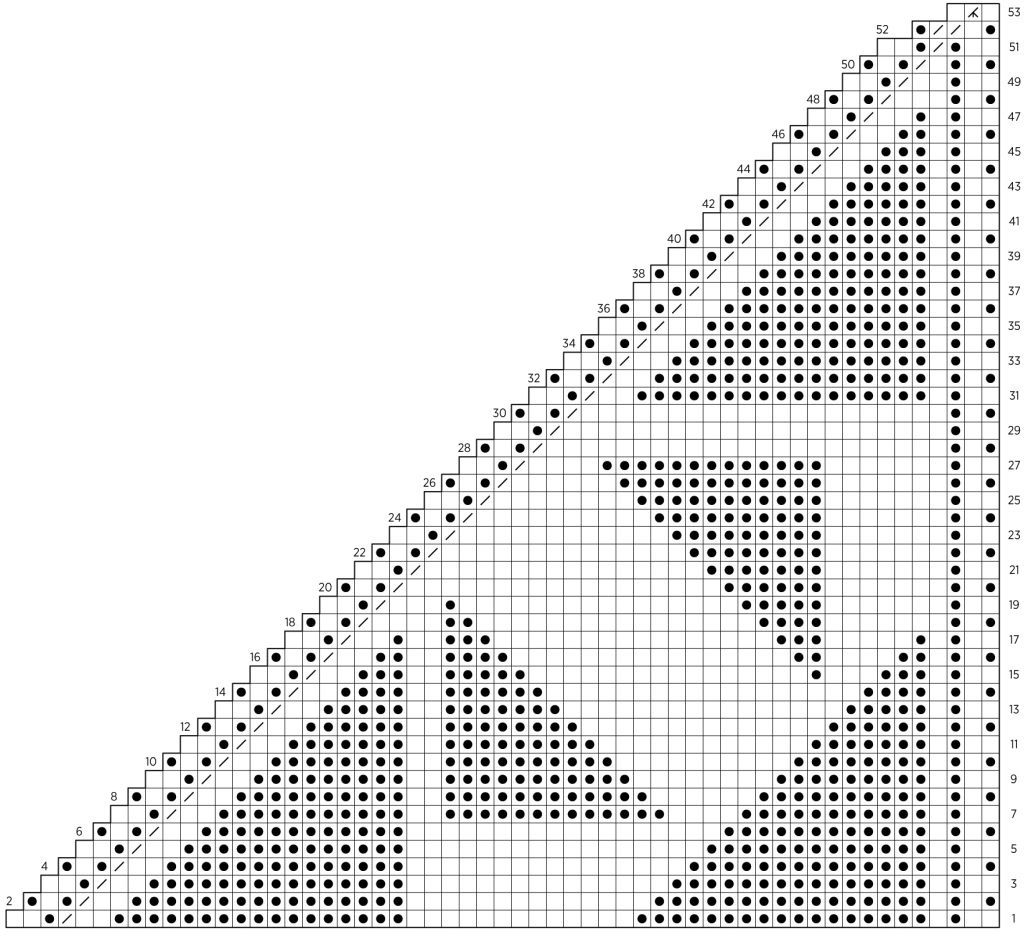
(Want to see it bigger? Click here to view the charts as a PDF!)
FINISHING
Cut yarn and pull tail through remaining stitches.
Weave in the ends and wet block.
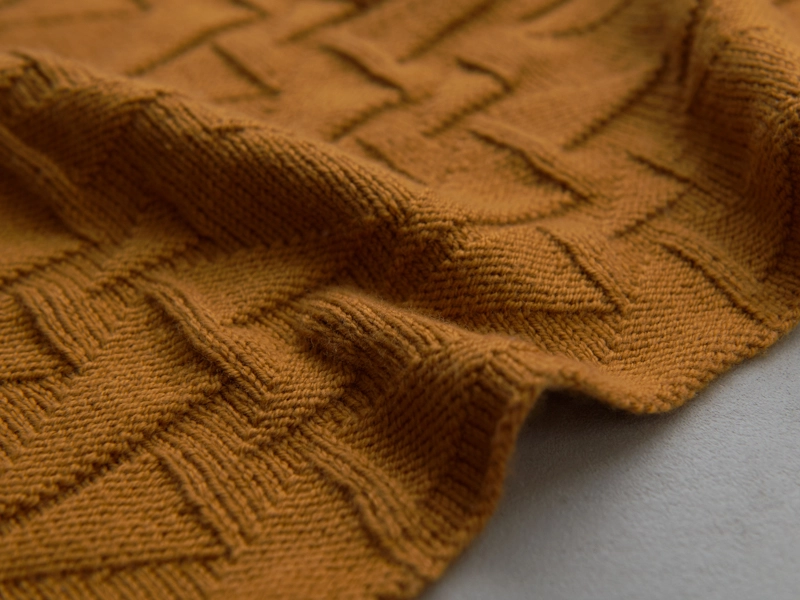
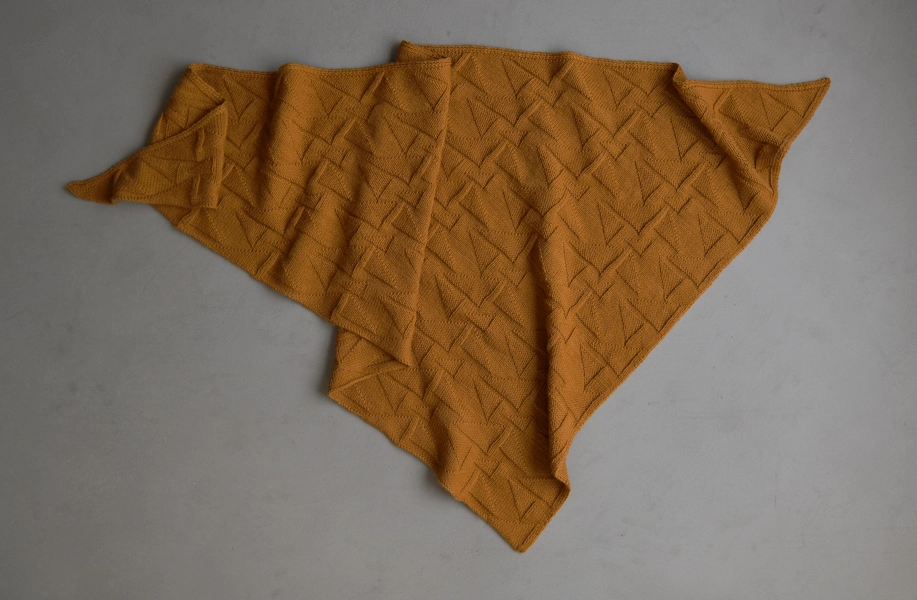

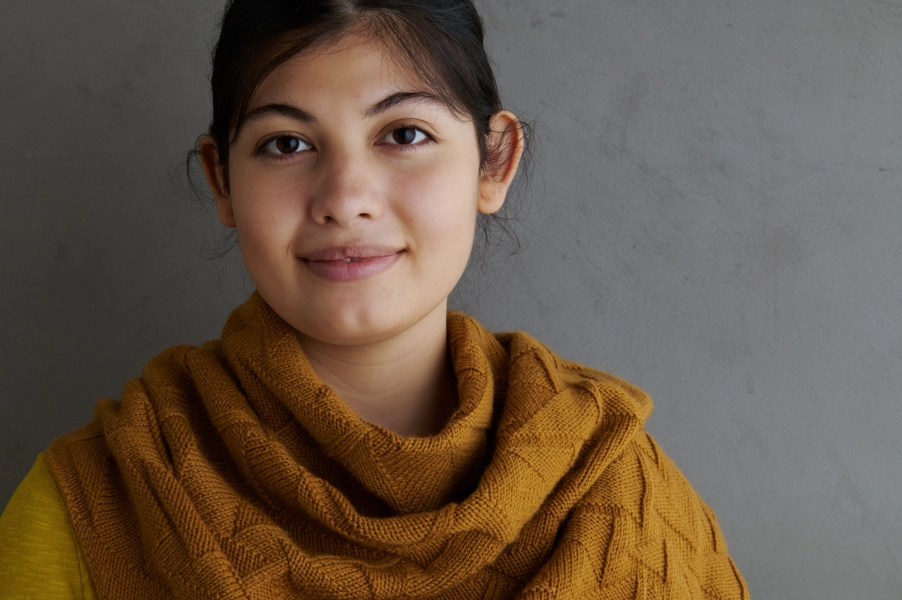
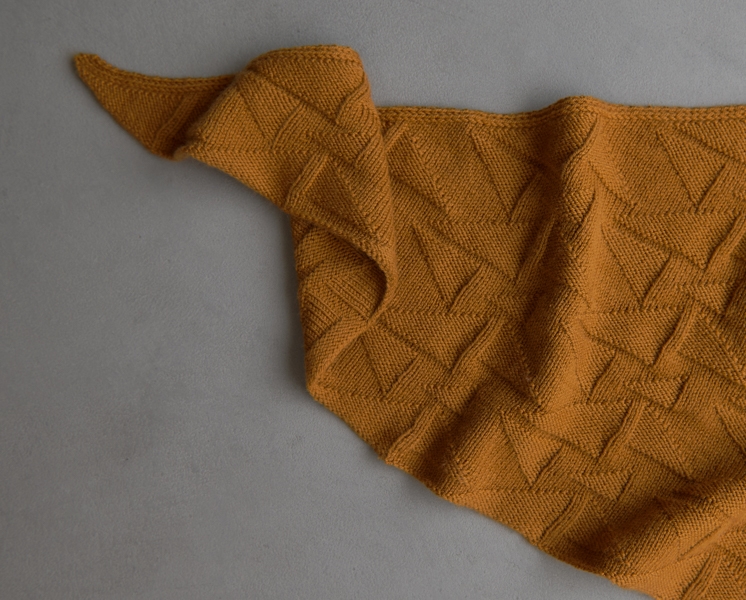
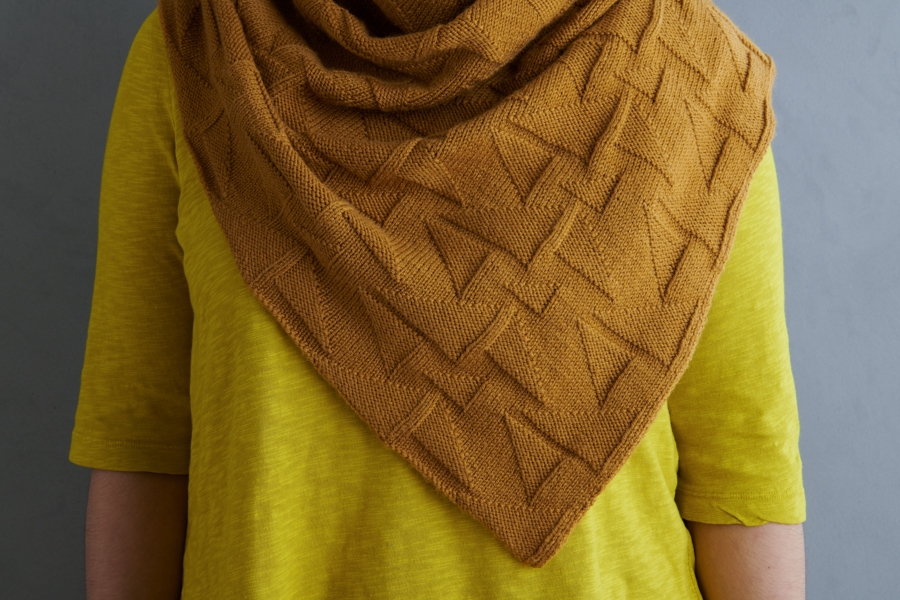
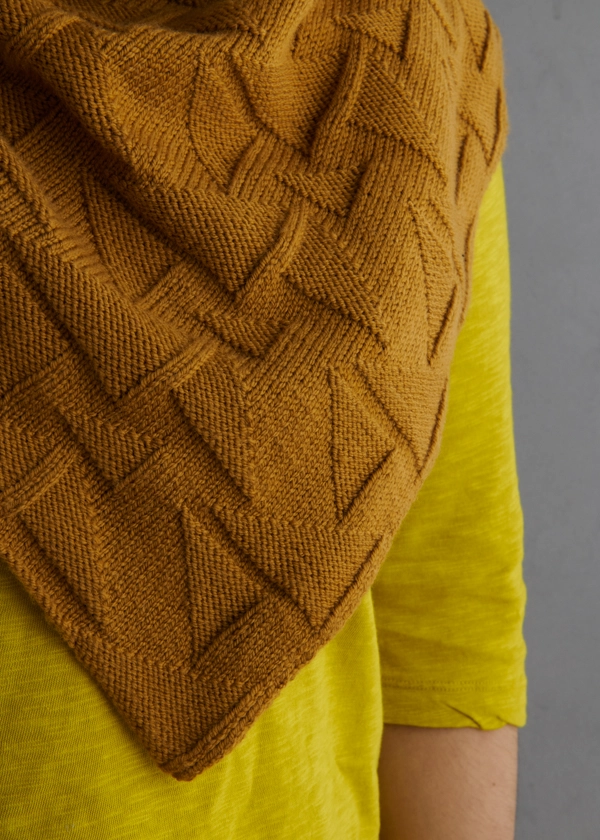
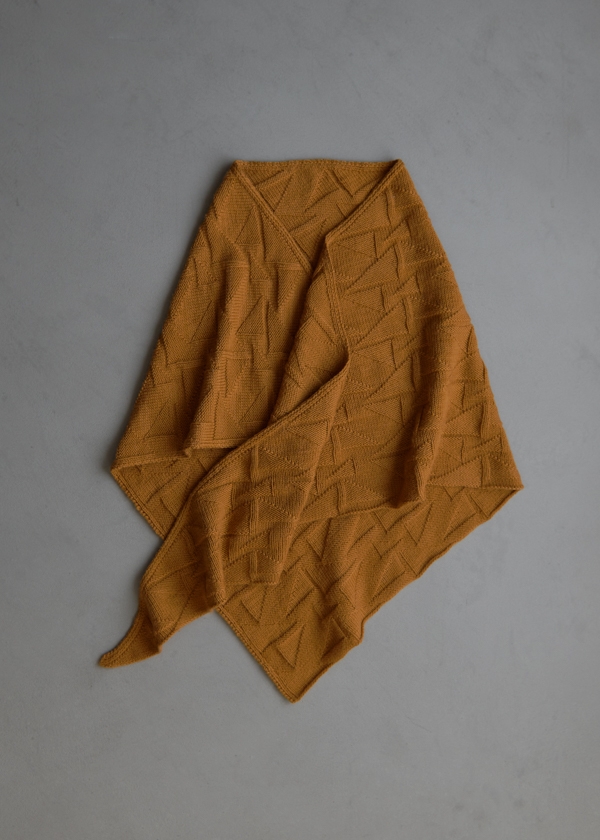


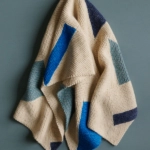

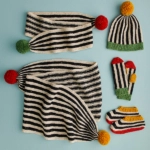
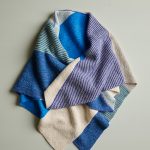
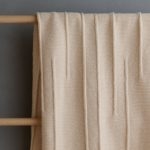

This pattern would make a lovely throw!
Do you have any tips for making a smaller/shorter version of this pattern? As in if we wanted to make it less of a wrap and more of triangular scarf? Thank you!
Hi Deme,
Thanks for reaching out! You can certainly knit a smaller version of this wrap by adjusting the number of stitches you cast on. To figure out your cast-on number, you will want to first knit a gauge swatch in pattern. Once you know how many stitches you are getting per inch, you can multiply that number by the width that you would like. Since this pattern is worked over a multiple of 30 + 58 stitches, you’ll need to make sure that this number matches that requirement. If not, then round to the nearest number that does! Hope this helps, and let me know if you have any other questions.
All the best,
Lili
Thank you very much!
So if we were going to do a smaller scarf – we choose a multiple of 30 and then add 58? So we could do 120 + 58 to cast on = 168 stitches? Thank you!
Hi Elizabeth,
It looks like you may mean 178 stitches! 120 + 58 is actually 178, not 168. But yes, 178 stitches will work to make a smaller wrap!
All the best,
Lili
Love the pattern!
My question is: when casting on 178 stitches for a smaller wrap, what yardage of yarn would be necessary?
Thank you,
Andrea
Hi Andrea,
Thanks for asking! You will need just 344 yards of Wigeon to make a wrap with a cast on of 178 stitches. Hope this helps!
All the best,
Lili
It is so fine, hello from Denmark.
All the Best
Lone
This would make a beautiful baby blanket. Is it possible to do this? If so, any tips?
Hi Denise,
Thanks for writing in; I think that’s a great idea! You could certainly use this stitch pattern for a baby blanket, but you would need to adjust the number of stitches you cast on. To figure out your cast-on number, you will want to first knit a gauge swatch in pattern. Once you know how many stitches you are getting per inch, you can multiply that number by the width that you would like and cast on the closest multiple of 30 stitches. Then, just follow the “Triangle Pattern” section until the blanket is as long as you’d like, and bind off. Hope this helps!
All the best,
Lili
Hi Lili, Thanks for the info. When following the “Triangle Pattern”, would I decrease the stitches? Is it possible to have a rectangular blanket?
Hi Denise,
Oh no, it looks like I gave you some wrong advice! Thanks for catching that. Thinking this over again, I think the easiest way to convert this pattern into a rectangular shape is to follow a portion of Chart 1, which is located near the bottom of the webpage. Cast on a multiple of 30 stitches (and add 6 stitches to this if you want to do the little bit of ribbing on the borders). Then, follow the “30-stitch pattern repeat,” which is outlined in a red box on the chart, while working the 3 stitches of the border on each side (these stitches are also notated in Chart 1).
Apologies for my earlier mistake, and I hope this makes sense now! Please let me know if you have any other questions.
All the best,
Lili
Hi Lili,
Thanks for this! I have not knitted in quite a while. This pattern has me excited enough to start again.
Lili,
I have never worked with charts before. Would it be possible for you to post the written directions to make the rectangular blanket?
Thank you,
Denise
Hi Denise,
Unfortunately, we don’t have the resources to rewrite the pattern, but we appreciate your request and will keep it in mind for the future! I also wanted to let you know that we do offer a wonderful tutorial on how to read a knitting chart, if you’d like to learn. You can find that tutorial right here.
All the best,
Lili
That was my first thought- how do I convert to a baby blanket! It’s going to be my next project – thank you!
I don’t care for asymmetrical garments. Can this be done as an equilateral triangle? Thank you.
Hi Lola,
Thanks for writing in! I think knitting up this wrap as an equilateral triangle is a very creative idea. While we do not have the resources to rewrite this pattern at the moment, I fully support your efforts to modify it on your own. Let us know how it goes!
All the best,
Lili
I hope to make a scarf using this pattern. Pretty easy to do!
Dear Purl Soho,
I am very excited because I should be casting on tonight. I watched the tutorial long tail cast on sling shot and I noticed it says that I should “measure (the tail) in three and a half width of whatever I want”…. how many centimeters is it for 328 stitches? The pattern says it is wide 54,5 inches = 13,843 meters … so around 14 x 3 = 42 meters is it ok? should I measure 42 meters to get the tail? thank you so much. Claudia Carolina
Hi Claudia,
Thanks for writing in! That looks right to me! 42 meters should be plenty for your cast on!
Happy knitting!
Gianna
Hi — I would also like to knit this as a scarf, but I can’t figure out how to do it. I checked my gauge and it’s 4 stitches per inch. I thought I would cut the wrap in half — maybe make the Hypotenuse 30 inches. So I would cast on 120 stitches right? The part I don’t understand is 30 + 58 — does that mean that my cast on needs to be a multiple of 88?
Hi Stormie,
Thanks for writing in! You would actually want to choose a multiple of 30 and then add 58. For example, you could use 120 + 58 and cast on 168 stitches so a smaller wrap!
I hope this helps!
Gianna
Wouldn’t it be 178 stitches?
Hi Stormie,
Whoops, yes it looks like Gianna meant to type 178!
All the best,
Lili
Hi,
Interesting & exciting pattern! Is this knit up flat on circular needles? If so, would this be considered magic loop?
Thanks!
Hi Jen,
Thanks for reaching out! This project is knit flat on circular needles, however, this would not be considered magic loop. For this project, you are simply working flat, back and forth, just as you would on straight needles, but we use circular needles since the cast on amount is quite large and would not fit on straight needles. Magic loop, on the other hand, is a technique used to work in the round, you would use the magic loop technique for smaller in the round items like socks! For more information, I would suggest checking out our lovely Magic Loop tutorial!
I hope this clears things up!
Gianna
Warmly,
Gianna
Hi Gianna,
Thank you!
-Jen
Just finished this piece and loving it….it’s taller than me, haha!
I chose not to set it per the instructions as I find the finished horn shape makes it easier for the shawl to stay put when wrapped around the body.
The first-ever pattern for which I need to do an excel sheet to keep track of the repeats and stitch counts, soooo much fun!!
Hi Clara,
Thanks for writing in! I am so glad to hear that you finished this project and had such a good time working on it! We would love to see your finished work, if you would like, you can email us pictures to customerservice@purlsoho.com or share with us on Instagram using the hashtags #PurlSoho, #PurlSohoBusyHands, and #PurlSohoTriangularTrianglesWrap
Happy knitting!
Gianna
What a beautiful Wrap and I’m wanting to know Is 4 balls of the Wigeon enough to knit this wrap please thanks much appreciated
Elizabeth
Hi Elizabeth,
Thanks for reaching out. You will need 4 balls of Wigeon to complete this pattern!
All the best,
Lili
How would PurlSoho Cotton Pure do on this pattern? It doesn’t appear to need the stretchiness of wool.
Once again, curse you, Jake! Your patterns are irresistible, and I am already working on two of your shawl designs. They are about finished, so contemplate doing this next.
Thank you.
Susan
Hi Susan,
Thanks for reaching out. You can absolutely use Cotton Pure for this wrap! As always, we recommend making a gauge swatch before starting a project to be sure you’re working with the right needles, especially when substituting yarns. This way, you can also test out the quality of the fabric before beginning the actual project. Hope this helps!
All the best,
Lili
Hello,
After reading all of the other questions that knitters had, and your responses, I have decided that I would love to knit the Triangular Triangles Wrap in the smaller version casting on 178 stitches. In knitting the smaller version, would the wrap be about half the size of the larger one, and if I use Purl Soho Wigeon yarn about how many skeins would I need?
Thank you so much for a beautiful project! Carolyn
Hi Carolyn,
Thanks for reaching out! If you cast on just 178 stitches, the dimensions of the wrap will be as follows: 29.7 inches along the longer edge and 19.6 inches along the shorter edge. It requires only 344 yards of Wigeon (1 skein), which means that it’s quite a bit smaller than half the size of the actual pattern (since that requires 1160 total yards). Hope this helps!
All the best,
Lili
Purl Soho’s Knitting Yarn that I purchased recently is put up in pre-wound balls, and now I see that Wigeon is too. Is Purl Soho planning to start putting up some of their other yarns in balls? That would be terrific for those of us who don’t have a swift and winder, or who otherwise struggle with winding hanks of yarn.
Hi Vivian,
That’s a great observation! We have indeed been adding more yarn in pre-wound balls to our collection (there are a few more in the works right now). We’re so glad that this is appreciated and to hear that it’ll make things easier for many knitters!
All the best,
Lili
I’m excited about knitting this shawl! Would it work with Andean Good Wool? If not, any other suggestions for other yarns? Thank you.
Hi Debra,
Thanks for writing in! Good Wool is a wonderful choice for this wrap since it’s a very similar yarn to Wigeon.
All the best,
Lili